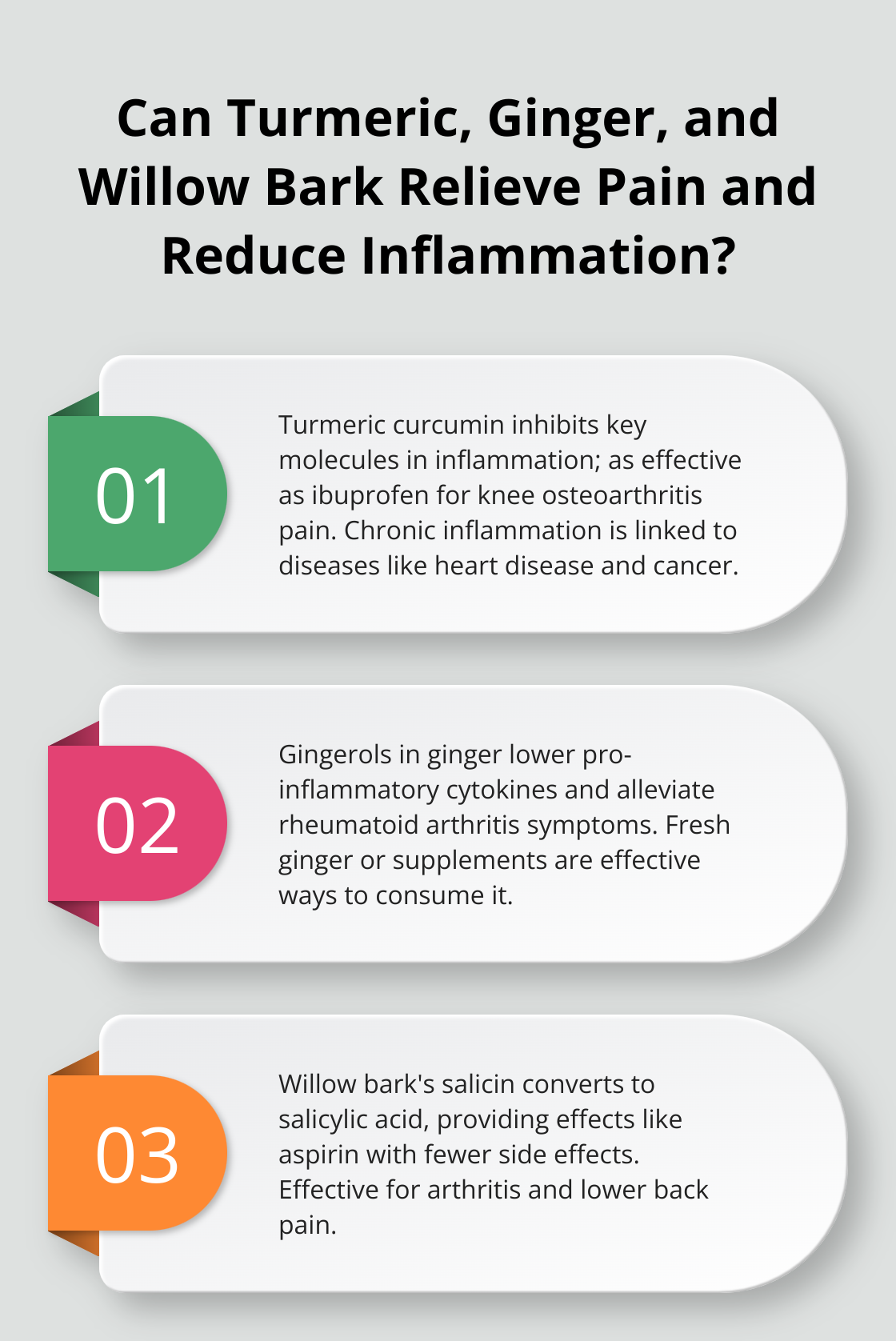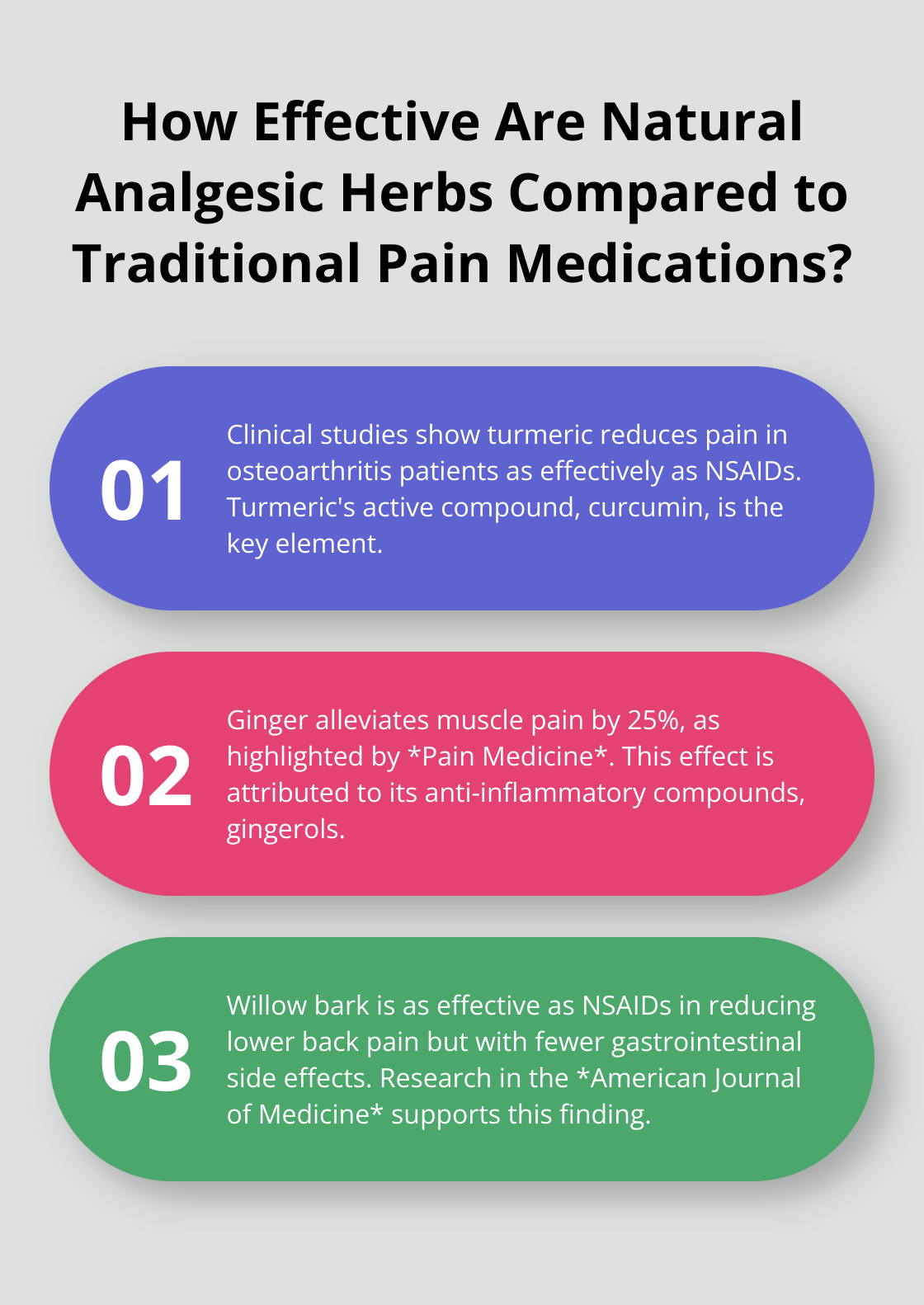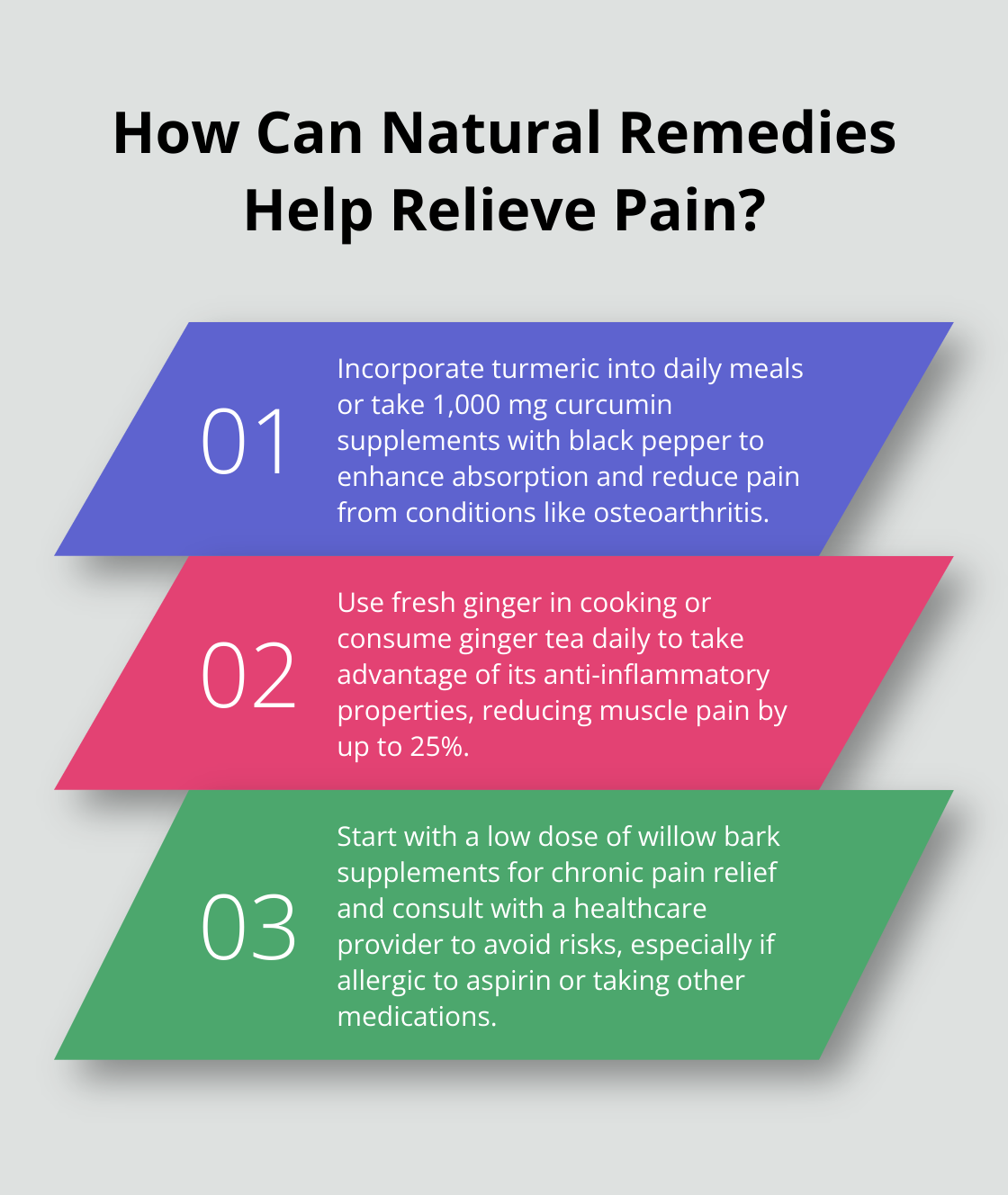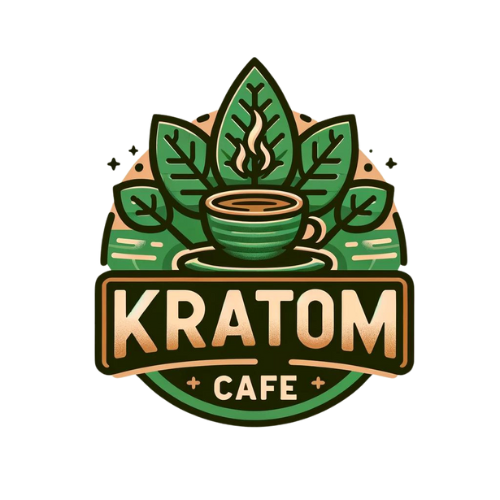Natural analgesic herbs have gained popularity for their potential to ease pain and inflammation without relying on conventional medications.
We at Kratom Cafe understand the importance of natural alternatives for enhancing well-being.
In this post, we explore some of the most popular natural analgesic herbs, supported by scientific research and their practical applications in pain relief.
Which Herbs Are Effective for Pain Relief?
Natural analgesic herbs have gained popularity for their potential to ease pain and inflammation without relying on conventional medications.
Turmeric
Turmeric, especially due to its active compound curcumin, has been extensively studied for its anti-inflammatory and pain-relieving properties. Research indicates that curcumin can reduce pain levels in conditions like osteoarthritis and rheumatoid arthritis. A study published in the Journal of Medicinal Food found that patients taking 1,000 mg of curcumin daily experienced significant pain reduction comparable to those taking NSAIDs. For practical use, incorporating turmeric into daily meals or taking curcumin supplements can be effective. However, it’s essential to ensure proper absorption by combining it with black pepper, which contains piperine that enhances curcumin absorption by 2,000%.
Ginger
Ginger is another potent herb known for its analgesic properties. A study in the journal Pain Medicine revealed that daily consumption of ginger can reduce muscle pain by 25%. Ginger’s anti-inflammatory effects stem from compounds called gingerols, which inhibit the production of inflammatory molecules. Using fresh ginger in cooking or consuming it as a tea can provide these benefits. Additionally, ginger supplements are available, but always opt for those with a verified ingredient list to ensure quality.
Willow Bark
Willow bark, sometimes referred to as nature’s aspirin, contains salicin, a compound similar to aspirin’s active ingredient. Research published in the American Journal of Medicine demonstrated that willow bark extracts could significantly reduce lower back pain and osteoarthritis symptoms. For those dealing with chronic pain conditions, willow bark supplements might offer substantial relief with less risk of the gastrointestinal side effects seen with synthetic aspirin. Always start with a low dose and consult with a healthcare provider, especially if you have allergies to aspirin.

Natural analgesic herbs can enhance well-being without the side effects associated with conventional painkillers. Each of these herbs – turmeric, ginger, and willow bark – has unique properties supported by scientific research, and their practical applications are straightforward. For more insights on using herbal solutions effectively, consider checking out this guide on using herbal solutions for pain.
What Are the Health Benefits and Uses?
Turmeric, ginger, and willow bark are not just popular for their pain-relieving abilities; they also bring a range of additional health benefits, making them a valuable addition to wellness routines.
Anti-inflammatory Properties
Turmeric’s anti-inflammatory effects are well-documented. Curcumin, its active compound, has shown to inhibit various molecules known to play major roles in inflammation. Chronic inflammation is linked to numerous health conditions such as heart disease and cancer. A study in the journal Phytotherapy Research revealed that curcumin is as effective as ibuprofen in relieving pain in knee osteoarthritis patients. This makes turmeric a potent ally not only for pain relief but also for combating inflammation-related health issues.

Ginger’s anti-inflammatory power comes from its gingerols, which reduce inflammation at the cellular level. Research has indicated that ginger can lower pro-inflammatory cytokines, helping alleviate symptoms of conditions like rheumatoid arthritis. A practical way to leverage ginger’s benefits is by incorporating fresh ginger into your diet or taking standardized ginger supplements.
Willow bark contains salicin, which metabolizes into salicylic acid. This component provides anti-inflammatory and analgesic effects similar to aspirin but with fewer side effects. It’s particularly effective for conditions like arthritis and lower back pain.
Pain Relief Applications
When it comes to pain relief, these herbs offer more than just temporary relief. Turmeric’s analgesic properties are comparable to conventional painkillers such as ibuprofen. This was demonstrated in a study where patients taking turmeric experienced remarkable pain reduction, leading many to adopt it as a safer long-term pain management option. Adding turmeric to your daily regimen could mean fewer side effects and sustained relief.
Ginger is especially useful for muscle pain. In a study published in Pain Medicine, participants consuming ginger reported a 25% reduction in muscle pain after exercise. Consuming ginger tea or supplements as a post-workout recovery routine can thus be particularly beneficial for athletes or individuals with high physical activity levels.
Willow bark’s salicin content makes it a powerful natural pain reliever. Research published in the American Journal of Medicine showed lower back pain sufferers experienced significant pain reduction. Opting for willow bark supplements can be a game-changer for chronic pain management with minimal gastrointestinal discomfort, unlike traditional NSAIDs.
Potential Side Effects and Precautions
Despite their benefits, it’s important to understand the potential side effects and precautions associated with these herbs. High doses of turmeric could lead to gastrointestinal issues such as stomach upset or cramps. It’s recommended to start with a small dose and gradually increase it. Those taking blood-thinning medications should consult with their healthcare provider, as turmeric can enhance their effects.
Ginger, while generally safe, can cause mild side effects like heartburn, diarrhea, and stomach discomfort at high doses. It’s advisable to integrate ginger gradually into your diet and avoid excessive amounts. Pregnant women and those on blood-thinning medications should seek medical advice before using ginger extensively.
Willow bark may cause stomach upset, nausea, and prolonged bleeding time in some individuals. It’s crucial to start with a low dose and monitor for adverse reactions. People allergic to aspirin should avoid willow bark entirely due to the similarity in their active compounds. Consulting with a healthcare professional before starting any new herbal supplement regimen is highly recommended.
For practical insights related to herbal supplements and their applications, refer to this guide on safe kratom consumption.
What Does the Research Say?
Scientific studies offer valuable insights into the efficacy of natural analgesic herbs, demonstrating their potential as alternatives to traditional pain medications.
Research on Efficacy
Clinical studies have consistently shown that natural analgesic herbs like turmeric, ginger, and willow bark can significantly reduce pain and inflammation. For example, a landmark study in the Journal of Medicinal Food found that turmeric, specifically its active compound curcumin, reduced pain in osteoarthritis patients as effectively as NSAIDs. Additionally, a study in Pain Medicine highlighted that ginger could alleviate muscle pain by 25%, attributing this to its anti-inflammatory compounds called gingerols.
Comparative Studies with Traditional Medicine
In comparison to conventional medications, natural analgesic herbs often present fewer side effects while maintaining similar efficacy. Research published in the American Journal of Medicine demonstrated willow bark’s efficacy in reducing lower back pain, comparable to traditional NSAIDs but with fewer gastrointestinal issues. Furthermore, turmeric’s pain-relieving effects have been matched against ibuprofen in several studies, showing similar results but with the added benefit of fewer adverse reactions.
Notable Clinical Trials and Results
Significant clinical trials underscore the effectiveness of these herbs in pain management. One robust trial involved 647 participants with knee osteoarthritis, where the use of curcumin resulted in pain relief comparable to ibuprofen, as published in the journal Phytotherapy Research. Another clinical study examining willow bark indicated notable pain reduction in participants with arthritis, reinforcing its role as a viable alternative to synthetic painkillers.

For those looking to integrate these natural options, practical guidance on using herbal solutions for pain provides detailed insights. However, it’s crucial to consult with healthcare providers before starting any new regimen, particularly if you have preexisting conditions or are on other medications. This not only ensures safety but also maximizes the benefits you can derive from these powerful natural analgesics.
Scientific evidence continues to validate the use of turmeric, ginger, and willow bark, making them indispensable in the realm of natural pain relief. The substantial body of research supports their integration into daily wellness routines for effective and safe pain management.
Conclusion
Natural analgesic herbs provide a valuable alternative to conventional pain medications, offering pain relief and anti-inflammatory benefits with fewer side effects. Turmeric, ginger, and willow bark have all been validated by scientific research for their effectiveness in managing pain conditions like osteoarthritis, rheumatoid arthritis, and muscle soreness.

Scientific insights reinforce the utility of these herbs. For instance, curcumin in turmeric has been shown to reduce osteoarthritis pain as effectively as NSAIDs, while ginger’s ability to cut muscle pain by 25% highlights its potential for everyday pain management. Willow bark’s salicin content offers a natural option analogous to aspirin, aiding those with chronic pain without the significant gastrointestinal side effects of synthetic drugs.
When considering the incorporation of these herbs into your wellness regimen, it’s critical to monitor dosage and potential side effects. Starting with small doses of turmeric to avoid gastrointestinal issues, integrating ginger gradually to mitigate potential heartburn, and cautiously using willow bark are all prudent steps. Always consult with a healthcare provider, especially if you are on blood-thinning medications or have allergies.
At Kratom Cafe, we are dedicated to providing comprehensive information on natural pain relief options. For further guidance on herbal solutions, visit our resource on herbal solutions for pain. Our platform serves as a crucial resource for those exploring Kratom and other natural remedies, enriching our readers with accurate and up-to-date content to enhance well-being.


Leave a Reply